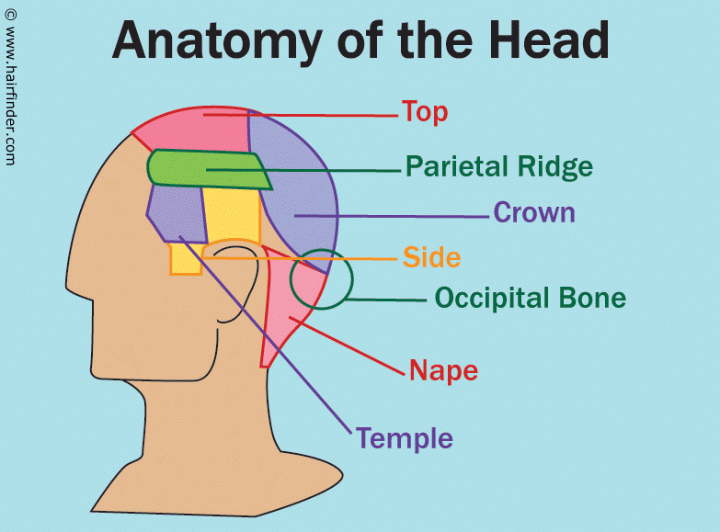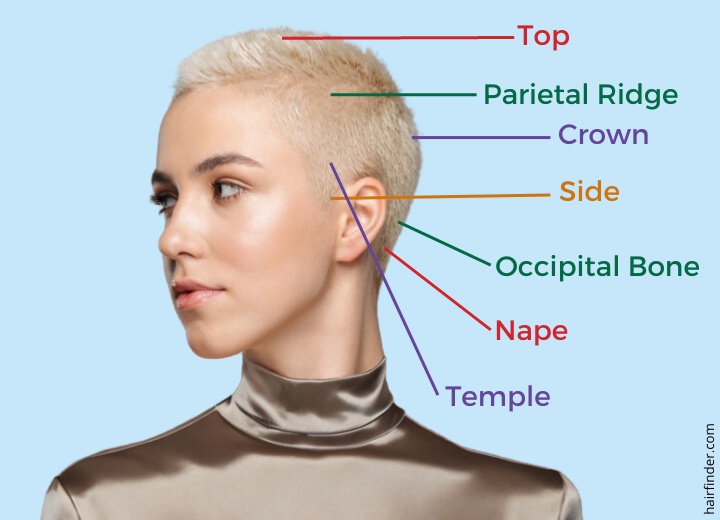Anatomy of the Head

It may seem unusual to discuss anatomy in haircuts, but knowing the references used for the areas of the head and what they specifically indicate can help you to understand what is intended with a particular haircut. The following are the terms for the basic features of the head as they affect haircutting:
Top: The top of the head is simple to understand. It is the area directly behind the forehead - the uppermost portion of the scalp.
Temple: The temples are the small areas just above and in front of the ears on each side of the head. They are pulse points for blood flow and flex points for the facial muscles. If you clench your teeth, you can feel muscles below the skin of the temples flexing.
Crown: The crown refers to the area at the upper back of the skull. The crown begins at the point where the top of the head begins to curve downward to the back of the head and ends at the point just above the occipital bone. It is a semicircular area.
Occipital Bone: The occipital bone is the small bony protrusion at the base of the skull where the skull connects to the neck. It can be easily felt through the skin of the scalp at the base of the skull.
Nape: The nape area refers to the sections of the head from the occipital bone to the bottom hairline of the neck and extending to the hairlines on each side behind the ears.

©Hairfinder.com
See also:
Hair lengths
Anatomy of the hair